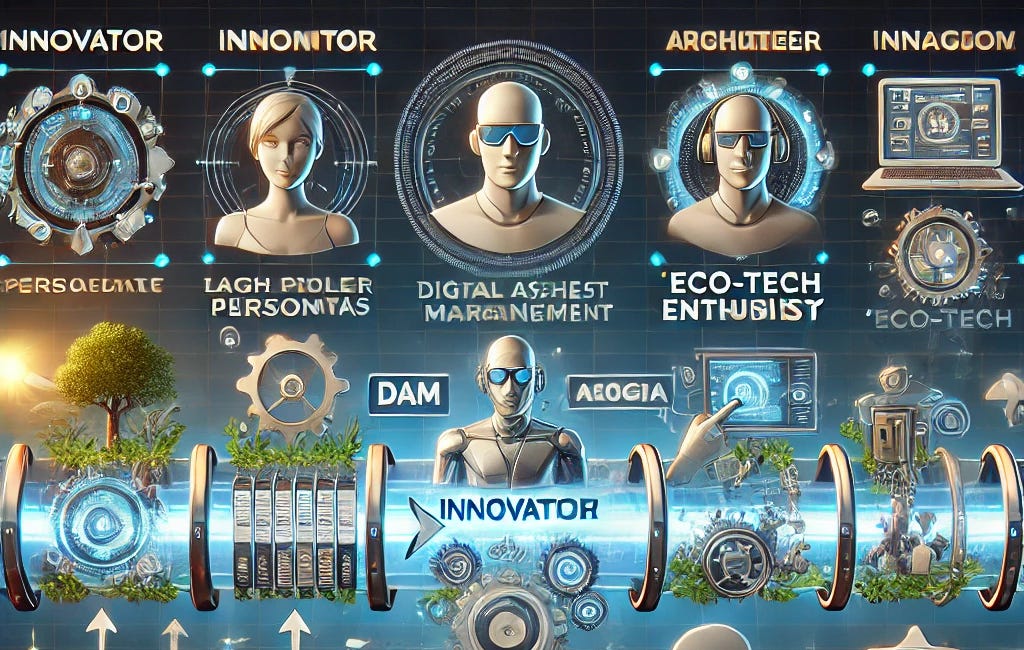Data stories become transformational when they’re guided by archetypes, crafted with meta-intelligence, and elevated by narrative design—it's where raw information evolves into a meaningful journey, connecting deeply with human experience.
At a top level, meta-intelligence is about having an overarching understanding that helps you connect insights across different fields and perspectives. It’s a way of thinking that looks beyond single pieces of information or one-dimensional interpretations. Instead, it considers how ideas, patterns, and narratives intersect. When we apply meta-intelligence to narrative design, we’re not just telling a story or focusing on isolated data points; we’re synthesizing information, connecting archetypes, and creating layered narratives that resonate on multiple levels.
In the context of archetypes—which are essentially foundational character patterns or personas—meta-intelligence helps us see beyond surface traits. It enables us to understand the deeper motivations, the shared cultural or psychological underpinnings, and even the subtle shifts in behavior that data might reveal. Think of it as looking through a prism: instead of seeing one aspect of a persona or an archetype, you see how each facet interacts, reflecting and refracting the broader story.
For example, let’s say we’re working with an archetype like “The Eco-Conscious Consumer.” On a basic level, we might know they care about sustainability. But with meta-intelligence, we’re looking at what drives that care—maybe it’s a blend of environmental awareness, social responsibility, and a desire for personal health. We then pull in data points that relate to each of those motivations, finding connections across behavioral data, environmental trends, and health-conscious buying patterns.
So, in short, narrative design with meta-intelligence isn’t just building a story; it’s architecting a network of ideas, motivations, and data, creating a cohesive story that aligns with both the individual and the bigger picture. And that’s where the real power lies: making narratives not only engaging but multidimensional and deeply rooted in real-world connections.
Foundational Level: Metadata as Building Blocks of Narrative
At the most fundamental level, metadata serves as the basic framework of narrative construction. This includes simple data points like keywords, tags, dates, and descriptions, which may seem like mundane details but are critical for organizing information and establishing a foundation for storytelling.
Key Principles:
Defining Context: Basic metadata, such as tags and categories, help contextualize pieces of information, allowing creators to group related content and start establishing a storyline.
Accessibility and Retrieval: At this level, metadata makes knowledge searchable and retrievable, creating a scaffold for narrative structure and helping users discover connections within a knowledge base.
Example: Imagine a news archive with articles tagged by topics (e.g., "politics," "science," "environment"). This foundational metadata allows users to locate articles by theme, setting up a base for creating a cohesive, context-driven story or perspective.
Intermediate Level: Metadata for Story Layering and Personalization
As metadata becomes more sophisticated, it begins to serve as a tool for layering narratives, allowing for personalized and multi-dimensional storytelling. Metadata at this level doesn’t just categorize—it adds meaning and intent, enhancing the depth and relevance of content.
Key Principles:
Layered Storytelling: Advanced metadata enables content creators to weave complex narratives by linking data points that may not be obvious on the surface. This could mean connecting data across multiple dimensions—such as time, location, or themes—to reveal more intricate, layered stories.
Personalization: Metadata supports personalization by dynamically adjusting the content according to user preferences, past interactions, or contextual factors like time and place. It tailors narratives to create more immersive, user-centric experiences.
Example: A streaming platform using metadata to recommend content. It doesn’t just suggest movies by genre but takes into account a user’s viewing history, mood, or even social media trends to present a curated narrative that feels personally tailored.
Advanced Level: Knowledge Graphs for Interdisciplinary Narratives
Moving to a higher level of sophistication, we enter the realm of knowledge graphs—networks of interconnected data points that represent relationships across concepts, entities, and contexts. Knowledge graphs go beyond mere categorization to represent how information is interconnected across disciplines, allowing for interdisciplinary narratives.
Key Principles:
Relational Contexts: Knowledge graphs enable systems to understand not only individual data points but also the relationships between them. This understanding opens the door to cross-domain narratives that reveal how concepts interact across fields.
Enhanced Inference: Knowledge graphs help generate insights based on inferred relationships, enabling narratives that reflect a broader, interdisciplinary perspective and revealing connections that may not be immediately apparent.
Example: Imagine a knowledge graph that links topics from public health, economics, and environmental science. It could highlight how climate change impacts economic policy or how public health crises affect global supply chains. This web of relations enables narratives that illustrate the complexities of global interdependencies.
Expert Level: Adaptive Narrative Systems with Dynamic Metadata
At this expert level, metadata and knowledge graphs combine into adaptive narrative systems. These systems dynamically evolve as new information enters the ecosystem, allowing narratives to adjust in real-time based on changes in context, user input, or emerging trends.
Key Principles:
Real-Time Responsiveness: Adaptive systems leverage dynamic metadata to update narratives as new data is integrated, making stories relevant to current contexts or shifting trends.
Personalized Evolution: Adaptive narratives not only respond to new data but evolve based on the user’s journey. They adapt and grow with the individual, providing continuity that reflects an ongoing, personalized story.
Example: A health and wellness app that uses adaptive narrative design to guide users on a wellness journey. Based on daily health metrics, personal goals, and environmental data (like weather or local health alerts), the app’s narrative evolves, offering personalized advice, motivation, and information in a constantly refreshing, context-driven manner.
Visionary Level: Autonomous Narrative Generation with Multi-Layered Intelligence
The pinnacle of sophistication involves autonomous narrative systems—AIs capable of creating stories that are not only adaptive but also generate insights autonomously across multi-layered knowledge domains. Here, we reach a level where the system not only synthesizes knowledge but also discerns creative, speculative insights based on cross-disciplinary intelligence.
Key Principles:
Interdisciplinary Synthesis: Autonomous systems blend knowledge across fields—like psychology, sociology, and economics—to produce narratives that offer complex, multi-faceted perspectives, drawing from an array of sources.
Predictive Insight: Such systems can forecast trends, providing forward-looking narratives that speculate on future possibilities and suggest solutions to complex, emerging challenges.
Example: Imagine an AI synthesizer that autonomously generates future scenarios for industries impacted by climate change. It combines insights from climatology, technology, economic models, and political trends to produce narratives that explore speculative futures and potential solutions, helping industries prepare for and respond to forthcoming shifts.
Reflections: The Evolution of Narrative, Metadata, and Knowledge
Each level represents an increasing sophistication in how narrative design leverages metadata and knowledge systems to build meaningful, resonant stories:
Foundational: Metadata organizes and provides basic context, forming the building blocks of narrative.
Intermediate: Metadata begins to enable more personalized and layered storytelling, creating richer user experiences.
Advanced: Knowledge graphs introduce interdisciplinary connections, opening narratives to complex, cross-domain insights.
Expert: Adaptive systems bring real-time responsiveness, allowing narratives to evolve with their context and users.
Visionary: Autonomous narrative systems create self-sustaining stories that synthesize insights and predict future trends.
As we advance through these levels, we move from static content to dynamic, insightful, and predictive storytelling. Each layer adds depth and complexity, moving closer to an AI that doesn’t just reflect knowledge but actively participates in creating meaning—a system that can bridge disciplines, understand nuance, and inspire new ways of thinking.
This journey illustrates how narrative design, metadata, and knowledge systems are not just tools—they’re pathways toward deeper insight and understanding in an increasingly complex world.
Metadata Persona Architect Demo
The purpose of the Metadata Persona Architect is to help companies develop a nuanced and strategic approach to content creation and marketing by creating Meta-Personas. Unlike traditional personas that focus on individual consumer profiles, Meta-Personas represent a
Metadata, and Hyper-Personalized Content in DAM
Metadata is the language that transforms digital assets from static content into dynamic, personalized experiences, aligning each piece perfectly with the audience’s needs and desires." – Meta Intelligent Engine




